A legal opioid ‘potion’ is proving a hit with backpackers in Thailand – so I gave it a go
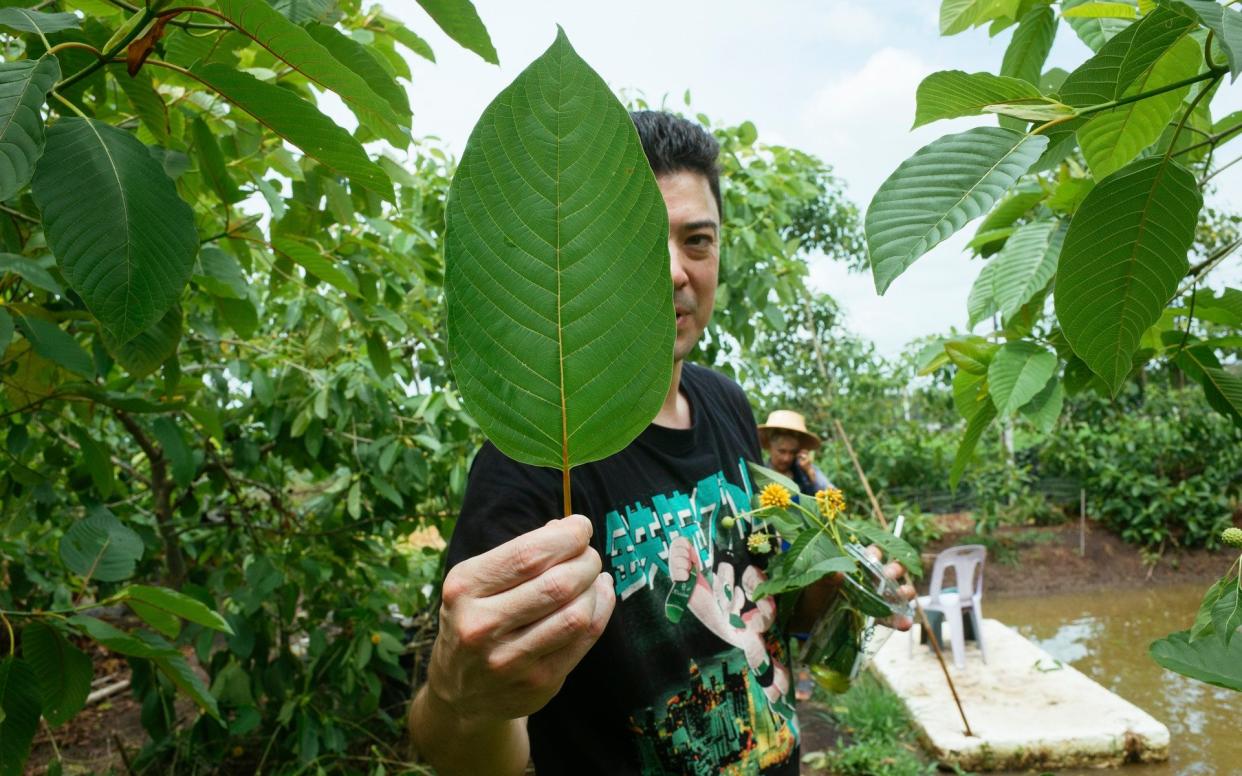
‘Well, this is trippy,’ says Jake Coyner, as the makeshift polystyrene raft we’re sitting on floats along shallow waterways. He can’t help but laugh: just beyond the walls of a nearby surreal, UFO-shaped Buddhist temple, a legal, non-prescription opioid is flourishing.
At Sherb’s farm, a smallholding on the outskirts of Bangkok, close to 1,500 ‘top-quality’ kratom trees are growing between the irrigation channels. Native to south-east Asia, the plant’s psychoactive leaves are touted as an energy-enhancing stimulant, a pain-relieving substance, or a euphoric mood booster, depending on how you consume it.
‘It comes from the same family as the coffee plant, and like coffee there are different varieties – horseshoe crab, the golden coin, the finial,’ Coyner, 41, says, examining the trees that supply his own business, OG Kratom. ‘I think more people are starting to explore its benefits, and Thailand is having almost a renaissance movement right now. It’s been a really interesting few years.’
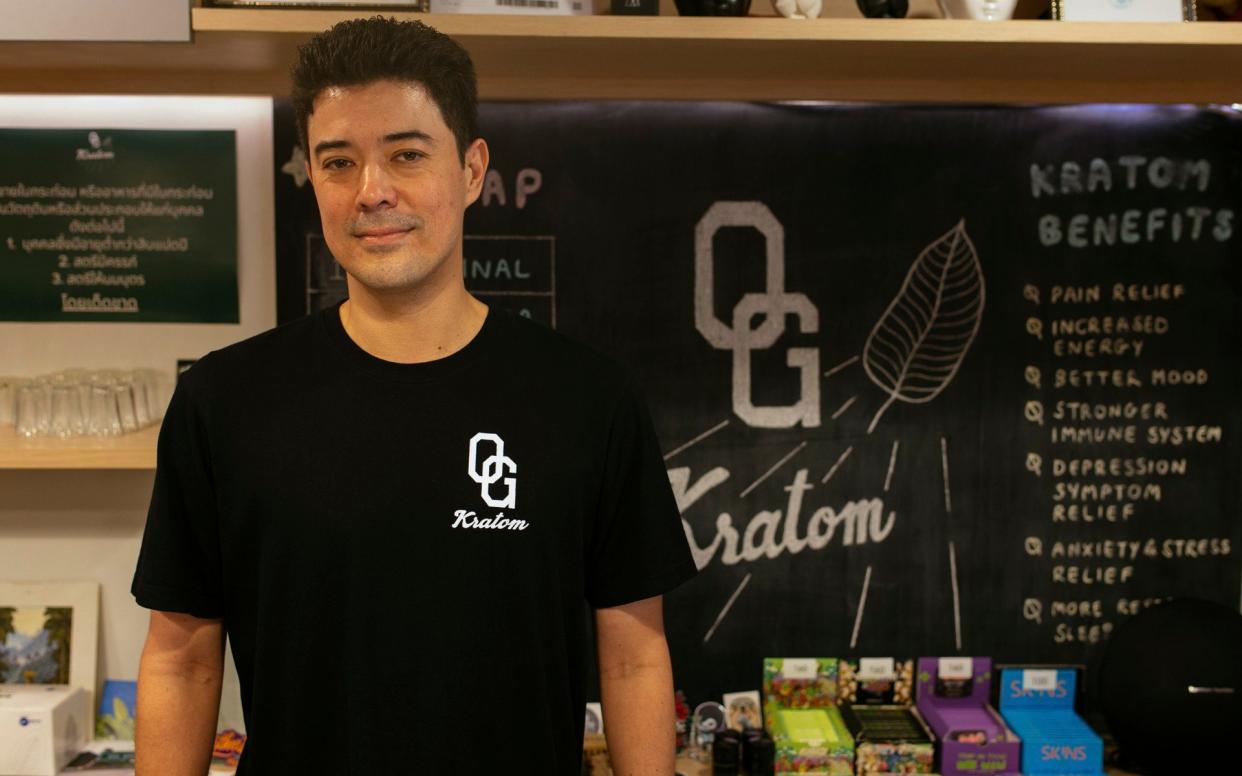
Kratom, from the tree Mitragyna speciosa, has long been used in south-east Asia, where labourers chew leaves for an energy boost, and traditional healers brew teas to tackle pain or common ailments such as stomach cramps.
But it divides regulators and health experts worldwide: some laud its medicinal properties and believe it could help wean people off harder opioids; others cite addiction concerns, recreational misuse and side effects including hallucinations and vomiting.
More still warn that the information to make a judgment is lacking. In 2021, a World Health Organization committee on drug dependence found there was not enough evidence for an international ban, yet said kratom should be ‘kept under surveillance’.
But in Thailand, where kratom was decriminalised three years ago, a fledgling industry has found fertile ground among foreigners.

In 2021, the government removed the substance from the narcotics list that had restricted its use since the 1970s. The drug hasn’t exploded like cannabis – some 6,000 marijuana dispensaries have popped up since weed rules changed in 2022 – but kratom is seeping into new markets, including expats and backpackers.
‘Traditionally, it’s been used a lot by farmers and labourers to give them energy, so it has this stigma as almost a “low-class energy drink”,’ says Coyner, a South Korean American who’s lived here for 15 years. ‘If you come from a good background in Thailand, cannabis is still cool but kratom is looked down on. What I’m trying to do is very different, I’m taking kratom seriously… and purposefully presenting a clean image for my products.’
!['Pretty much all of my customers are farangs [foreigners]… partly because my products are five times the price of the stuff you get on the street,' says Coyner](https://s.yimg.com/ny/api/res/1.2/H.rswJ6Uo0XNopSshtLKRg--/YXBwaWQ9aGlnaGxhbmRlcjt3PTEyNDI7aD03NzY-/https://media.zenfs.com/en/aol_the_telegraph_624/29011af5bf0753b6f5e77bf97ffde467)
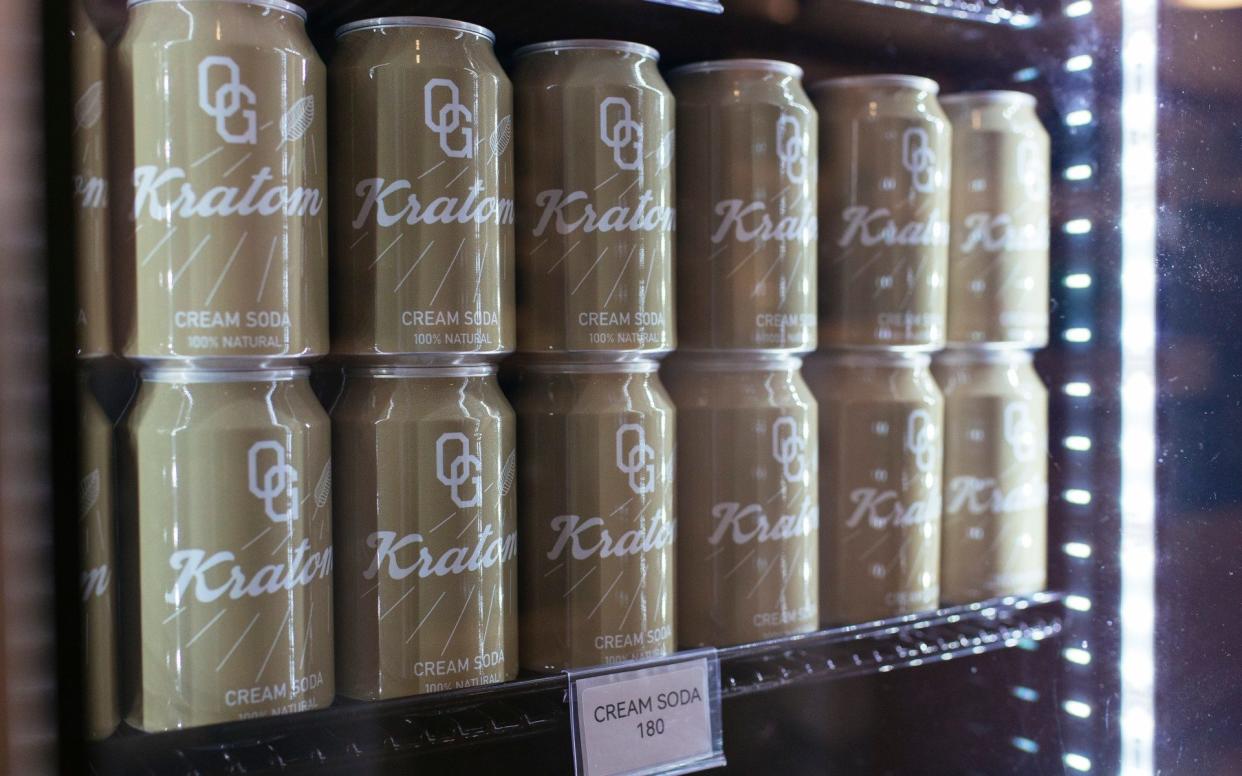
Unlike the street stalls selling leaves and bootleg brews for as little as 40 baht (90p) to motorbike drivers and construction workers, his specialist café in Bangkok is full of kratom sodas, tea bags and capsules targeting wealthier international consumers.
‘Most of my customers are over 30. They’re using it for pain relief, as an alternative to alcohol, or because of previous drug addiction issues,’ says Coyner.
In his glistening white café, adorned with stylised Thai and Japanese-inspired prints, I met customers including a US air-force veteran searching for pain relief, a Briton stocking up on kratom sodas to watch the football with a hangover-free buzz, and an American hoping for a non-caffeinated energy boost.
‘Pretty much all of my customers are farangs [foreigners]… partly because my products are five times the price of the stuff you get on the street,’ says Coyner, who also supplies his sodas – packaged to resemble craft beers and sold for 180 baht (£4.05) – to upscale bars across the city.
But iterations of kratom have also seeped into another farang market: Thailand’s popular backpacker trail, where carefree, budget travellers are hunting for their next high.
Beneath the neon lights of Bangkok’s infamous Khaosan Road, Bret is nursing a cold beer. The Australian traveller has adopted a ‘hair of the dog’ mentality after a heavy night with new friends, plenty of booze – and a mysterious orange liquid ‘from the alley behind 7-Eleven’.
‘It was like a really caffeinated energy drink – like speed in a bottle,’ he says, perched on a bar stall watching the rugby sevens. ‘One of the guys randomly bought a couple of plastic bottles of the stuff. I’d never had it before and wasn’t sure what it was.’
After nine months backpacking through south-east Asia, Bret had unwittingly stumbled across a bootleg brew of kratom. ‘It doesn’t taste very good,’ he adds. ‘I sort of recoiled when I had a sip – it’s very bitter. But yeah, sure, I’d try it again. It was a fun night.’
Strictly speaking these are black-market drinks: cultivating, selling and possessing leaves is permitted under an updated Kratom Act in 2022, but trading any processed products requires approval by the Thai Food and Drug Administration (FDA).
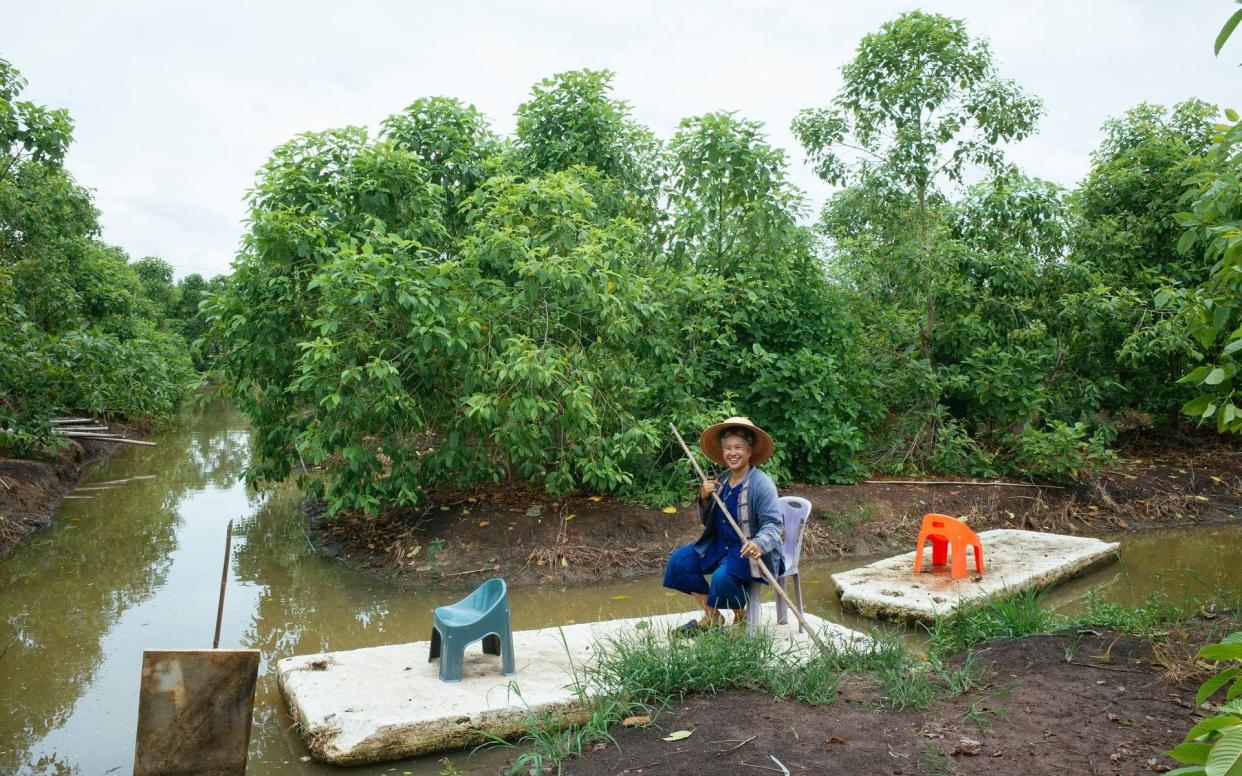
You have to know where to find it. Unlike the garish weed dispensaries, buckets of booze or fried scorpions that line Bangkok’s notorious party street, kratom sellers are tucked away down inconspicuous alleys. It was only armed with Bret’s vague directions, and after several red herrings, that I found a tiny halal restaurant with a kratom side-hustle. Inside a large cooler were dozens of home-brewed bottles, on sale for 50 baht each (around £1.10).
So perhaps it’s unsurprising that many backpackers in the area said they’d never heard of the drug or seen it for sale. But of those that had, most pointed to southern Thailand. ‘It seems most common in the south,’ says Louie, 28, a British traveller sheltering from a monsoon storm at an Irish pub. ‘There’s this bloke who has a bar in Krabi who constantly posts online about kratom. There’s this weird culture around it. I’ve avoided it, but I know people are trying it.’
Louie was referring to Tom Birchy, a former Ukip campaigner turned controversial influencer, who set up shop in the beach town Ao Nang. He has status in the bizarre, feuding world of male British influencers in Thailand – stumble down that rabbit hole and you’ll come across wild accusations and long monologues updating followers on various defamation cases unfolding in the Thai courts.
But since Birchy – who has 438,000 followers on TikTok – moved to Thailand a couple of years ago, he’s founded the kratom store best known among British backpackers: Knock Out Labs.
‘These are my famous kratom potions,’ Birchy, who did not respond to Telegraph interview requests, says in one TikTok video with more than 580,000 views, showing off his products. ‘Kratom is a leaf that’s used here in Thailand for medicinal purposes, for recreational purposes: it gives energy, helps you tolerate the heat and provides a nice uplifting effect on one’s mood.’
It’s a sales pitch he consistently makes, and certain corners of social media are now awash with people trying Birchy’s ‘potions’ – branded plastic bottles containing brightly coloured kratom concoctions that resemble WKD.
‘It’s pomegranate flavour, a lot nicer than normal kratom,’ wrote harryrst16, in a video last year that racked up more than 2,000 likes. ‘It has a slight bitter aftertaste, but when you think about kratom it’s made out of leaves, that’s what you’d expect. Overall I’d give it a nine out of 10.’
‘I’m going to try a potion: this is the pineapple flavour,’ wrote another user, connxrmac, in December, as he sipped a bright-yellow liquid. In a later video explaining how it affected him, he added: ‘It just made me feel more awake, a bit more alert, I didn’t feel so hot, which was cool. It was a bit like having a Red Bull.’
Intrigued by the hype, I decided to give kratom a go. Long before I knew much about the substance, I’d spotted a kratom soda listed under a ‘mindful elixir’ tab on the menu at a chic café in an old Thai house not far from my flat in Bangkok. I headed over, settled into the lush courtyard garden and picked my poison: a peach and lemon kratom soda, which was described as ‘offering a unique blend of stimulation and tranquillity’.
The drink itself was delicious, and I soon felt my brain kick into a new gear – much like a boost from a strong coffee. I was excited: could this be my flat-white replacement? Despite loving the taste, I had to quit coffee several years ago because it made me shaky.
But an hour later, the bubble burst as a wave of nausea washed over me. Maybe kratom wasn’t for me. Later, when I recounted my experience to Coyner, he offered an explanation: perhaps I hadn’t paired my soda with enough water – like coffee, kratom can be dehydrating.
Which is how I came to try it a second time; a newly brewed iced tea at Sherb’s farm. This iteration was far stronger and much more bitter, akin to the bootleg offerings near Khaosan Road. Coyner raved about it, yet I had no inclination to finish the plastic cup of murky liquid I’d been offered. After a few sips, the mixture hit me hard; I felt sleepy and spaced out on the way back to Bangkok. Would I try it a third time? I’m not sure.
Worldwide, kratom remains one of the least-known recreational substances. In the 2021 Global Drugs Survey, only around 6 per cent of respondents had ever tried it, a figure that stands at 33 per cent for magic mushrooms and 74 per cent for cannabis. But it’s not just Thailand that has a burgeoning kratom market.
While consumption data is limited in much of the world – including the UK, where kratom is legal to possess but illegal to sell or import under the Psychoactive Substances Act – available figures suggest it’s fairly widespread in America. At a US federal level the drug falls into a grey area, but it’s banned in six states and regulated in another 16.
‘The plant is gaining popularity in the Western world, especially in the US,’ says Professor Christopher McCurdy, director of translational drug development at the University of Florida and a drug safety advisor for the US FDA. ‘[US estimates] on the conservative end put it as somewhere around two million [users]. But we definitely feel, based on sales and visibility, that it’s well over 20 million.’
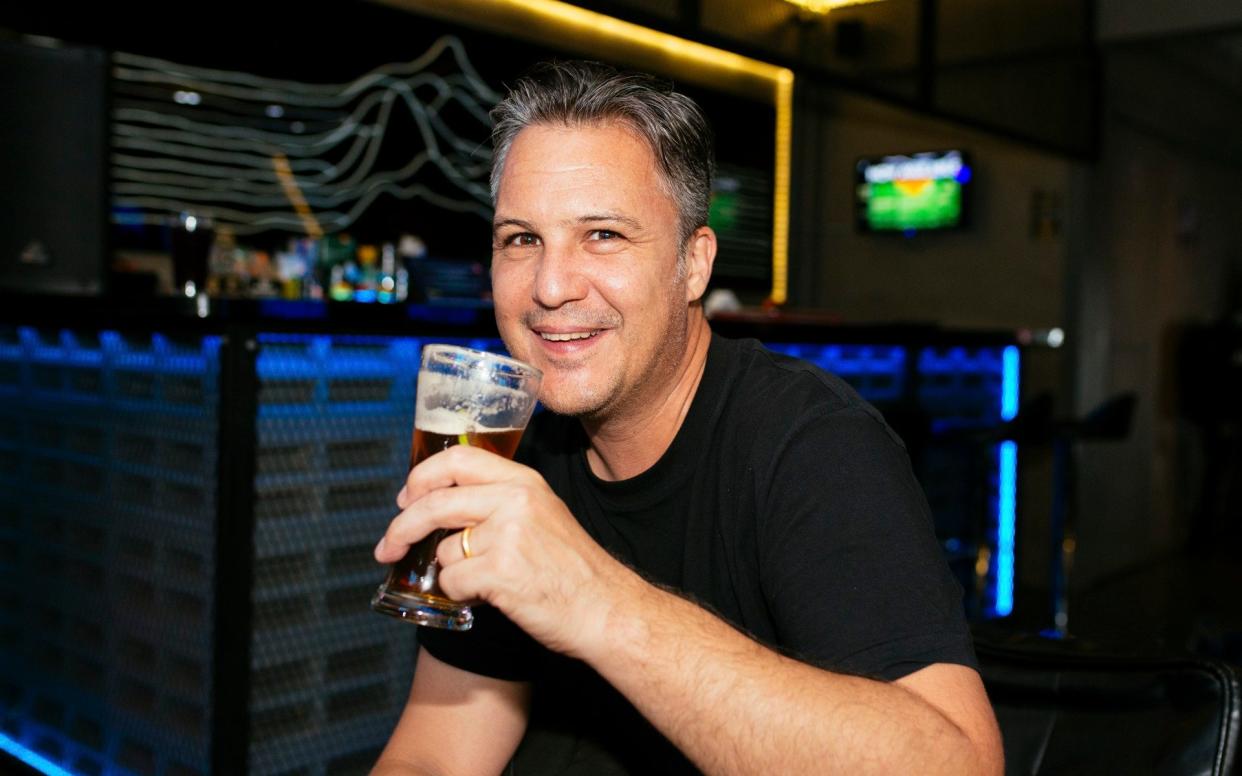
How does kratom actually affect people’s brains? Is it safe to use, and what are the risks – including addiction? To keep up with this growing market, scientists are honing in on the drug to better answer these questions. Studying and characterising kratom is not simple. The leaves contain more than 40 different alkaloids, says McCurdy, describing the substance as ‘a complex symphony orchestra of pharmacology’.
The most abundant chemical is mitragynine. And when people consume kratom, it is mitragynine that interacts with the brain’s mu-opioid receptors which, among other things, control pain levels. The compound also affects the serotonin receptors involved in mood regulation, plus the adrenergic receptors which control the fight-or-flight system – impacting adrenaline, heart rate, blood pressure and energy.
‘There are reports that kratom can elevate the mood, increase energy and relieve pain. And when you look at these three types of pharmacology, they sort of bear out in that single molecule mitragynine,’ says McCurdy.
But he adds that it’s partially true, partially misleading to simply categorise kratom as an opioid. The substance interacts less with the brain’s opioid receptors than drugs like morphine, oxycodone or heroin, and has a lower risk (though not a zero risk) of causing respiratory arrest. This stops people breathing, and is the cause of death in most opioid overdoses.
‘A lot of people have focused on mitragynine and, by extension, equated kratom as an opioid, but it’s not really an opioid in the sense that we would think of morphine or heroin,’ says McCurdy. ‘However, that doesn’t mean it’s not dangerous. There’s a range of doses that can cause benefits, and a range of doses that can start to become problematic.’
There is some early evidence around this, he adds. In a single ascending dose trial, the US FDA found there were no significant adverse reactions when people were given between two and 13 grams of leaf material in capsules – though higher doses did trigger nausea, vomiting and gastrointestinal issues in some patients.
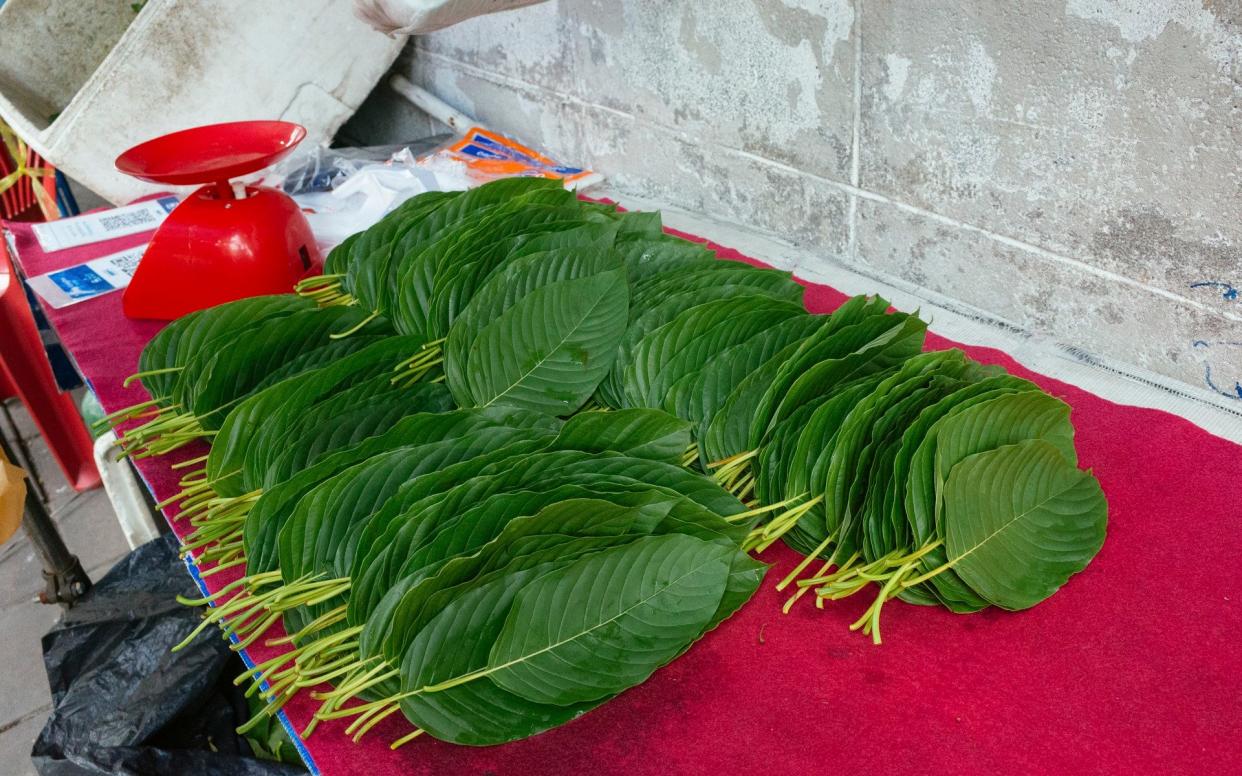
Scientists observing kratom users have also noted a range of other health risks: from itching and constipation to increased urination and severe weight loss. There have also been reports of more extreme effects, such as seizures, hallucinations and liver toxicity. Deaths have also been reported, though scientists say it’s difficult to disentangle kratom’s specific role in these fatalities.
‘There have been very, very few reports where kratom has been indicated as the sole cause of death,’ says McCurdy. ‘Most of the time, individuals are taking so many substances so it’s difficult to tell what is responsible for what. But in high enough concentrations, it can certainly be problematic and harmful.
‘I equate it to alcohol – not all kratom is equal,’ he adds. ‘Leaf and tea products are really more similar to the traditional preparations. They don’t have as much concentration in them, [they’re comparable to] a light beer.
‘But when you start to move into some of the very highly concentrated extracts, we’re starting to [compare to] almost pure grain alcohol… unfortunately [in the US] we’re seeing more and more concentrated products coming out pretty much on a monthly basis.’
Whether the reported benefits stack up is harder to determine at this stage, says Professor Charles White, the head of the department of pharmacy practice at the University of Connecticut, but ‘there are no clinical trials saying that kratom is useful to treat chronic pain, opioid use disorder, alcohol use disorder, anxiety or any other ailment’.
There is, though, one study that simulated acute pain, by asking people to plunge their arms into an ice bath. It found that kratom allowed users to remain in the extremely cold water for longer periods, but also suggested the substance causes hyperalgesia – an increased sensitivity to pain after long-term use.
‘This is a bad effect to have, [and] is one reason people cannot get off regular opioids – they just feel achy all over when they don’t get their scheduled dose,’ says White. ‘The take-home message may be that kratom can treat acute pain like a muscle strain or tooth extraction, if it is used for a couple of days and then stopped. But if you are taking it daily, you run the risk of having more total body pain than before you ever used it.’
Another big question mark is the addiction risk. There clearly is one, especially where users are frequently taking high doses, and anecdotal reports suggest tolerance is a problem – with users forced to take more and more to get the same results over time. People have also noted a range of withdrawal symptoms if they try to quit. It’s just not clear how quickly these risks kick in.
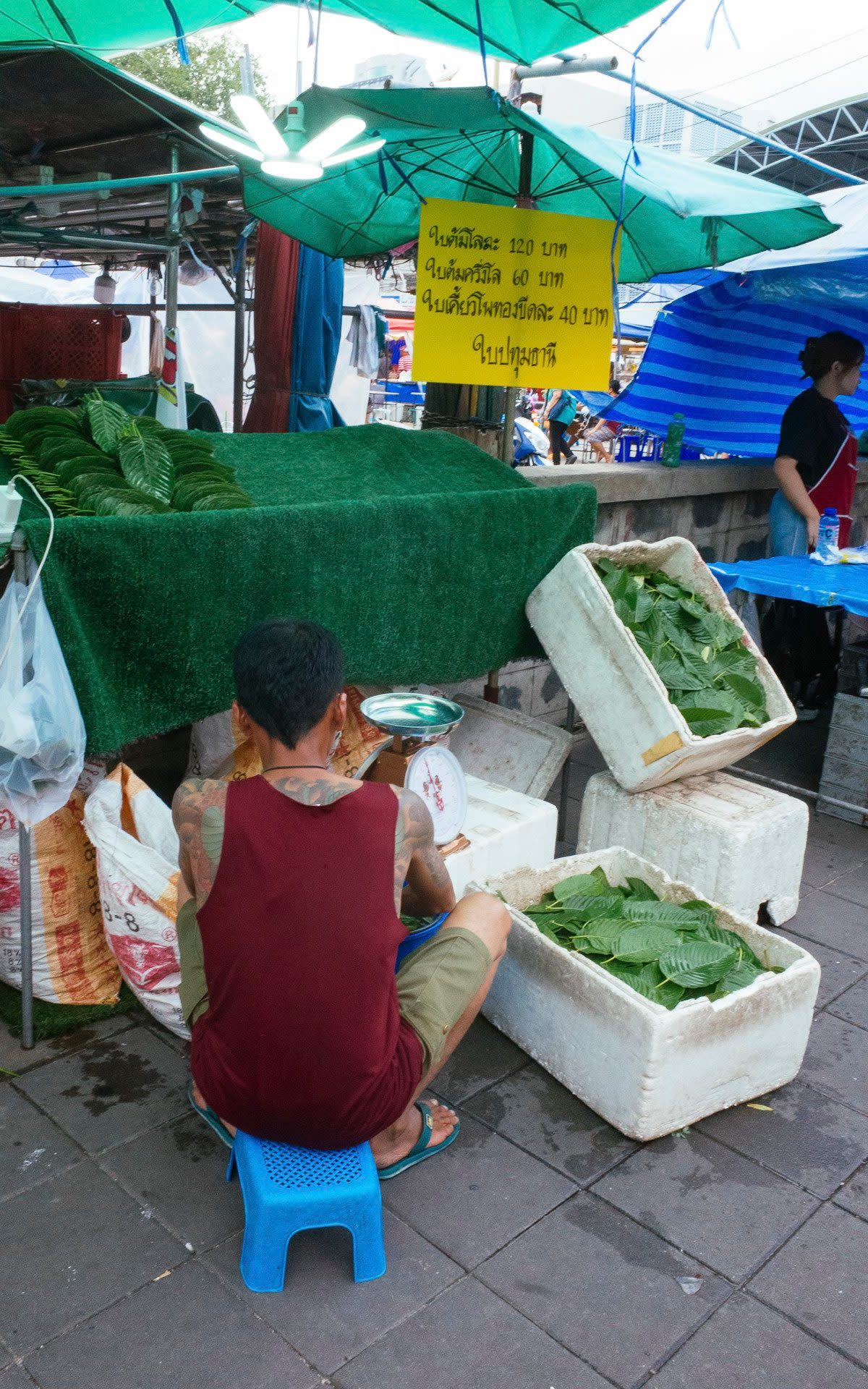
‘Kratom is an addictive product for some people,’ says White. ‘Like regular opioids, some people are not prone to opioid addiction, but others are. Unfortunately, it is hard to know who is going to be in the risk category and who is not.
‘Having said that, kratom could be useful for opioid use disorder as an alternative to the FDA-approved therapies, Suboxone or methadone,’ he adds, pointing to anecdotal reports and small studies that suggest kratom is a ‘promising’ option.
But most experts are less concerned about people trying kratom for medical purposes, and more worried about people using it for a euphoric high – something that is not unique to Westerners. In many roadside stalls across Thailand, kratom is sold alongside substances like cough syrup, which teenagers especially abuse.
‘Some individuals use kratom recreationally by mixing it with other substances, like cough syrup, mosquito repellent, carbonated water or even powder in fluorescent lamps. This creates a concoction known as “4x100”, which poses serious health risks,’ Dr Thongchai Sooksawate, a pharmaceutical scientist researching kratom’s healing properties at Bangkok’s Chulalongkorn University wrote in a recent commentary.
‘Kratom plants hold potential for both Thai traditional and modern medicine, underscoring the need for further research to harness its medical benefits… [but it] should be used for medicinal purposes only, and efforts should be made to prevent abuse,’ he added.
There are also concerns about travellers taking substances without understanding what they’re taking and the risks involved. ‘It’s one of the compounds I’ve heard people seeking out by specifically organising holidays to try them – I’ve heard the same for ayahuasca, for example,’ says Dr Caroline Copeland, a senior lecturer in pharmacology and toxicology at King’s College London.
‘I think it would be incredibly dangerous to take something sold as kratom – you have no idea if that’s what you’re actually being given, it could be something much more dangerous, and even if it is kratom, you don’t know what concentration it is,’ she adds.
Back on the outskirts of Bangkok, Coyner is also concerned about misuse. ‘I love kratom, I use it every day,’ he says, sipping a kratom soda and wearing a kratom T-shirt as a farmer propels the polystyrene raft through the kratom farm’s waterways, past thousands of bushy trees.
‘But I think it’s pretty disgusting, what’s happening in the West,’ Coyner adds. ‘People do this thing called “toss and wash”, where they’ll shoot down a load of powder with water. It’s just freaky. I’ve seen a couple of people do that here and they look like they’re on heavy opioids – their faces are pale and their pupils are small.
‘The Thais abuse it too – 4x100 is a common recipe. But mixing kratom and cough syrup is really bad for you – I never offer cough syrup, and I don’t sell it to minors. All this is so disruptive for individuals and the industry.’
Coyner, who grew up under strict drug laws in Japan, just hopes problems don’t escalate to a degree where kratom is pushed back into a black market. ‘To me, Thailand is a paradise right now – you can openly smoke weed, or have a business making money out of kratom. It’s refreshing,’ he says, geeking out over leaf varieties and new cuttings. ‘We better not ruin it.’


